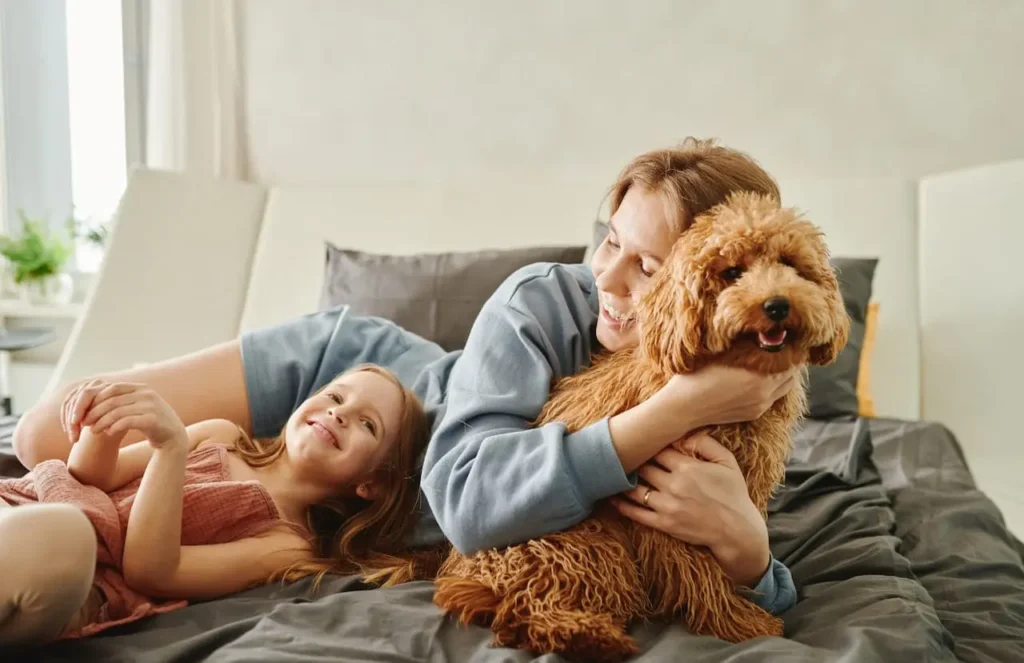Ensuring a Safe Environment for Your Pet?

Introduction
A. Importance of Pet Safety
Pets are like family. Just like we keep our brothers, sisters, and parents safe, we need to do the same for our pets. This means making sure they are protected from things that could hurt them.
B. Overview of What Constitutes a Safe Environment
A safe environment for pets is like a cozy home for them. It includes things like a comfortable place to sleep, food and water that’s always available, and a place to play safely. It’s about keeping them away from dangers like sharp objects, chemicals, or places where they could get trapped.

Housing and Shelter
A. Choosing the Right Shelter
When we talk about shelter for pets, we mean where they live. It could be a cozy cage for a hamster, a comfortable bed for a dog, or a spacious tank for a fish. The shelter should fit the size and needs of the pet, like a snug home that keeps them safe.
B. Ensuring Proper Ventilation and Space
Just like we need fresh air to breathe, pets need good ventilation in their shelter. This means there should be enough openings or airflow so they don’t feel stuffy. Also, they need space to move around freely, not feeling cramped. Enough room helps them stay healthy and happy.
C. Temperature Considerations
Pets are sensitive to temperature changes. Some, like reptiles, need warmth to stay active. Others, like rabbits, prefer cooler places. It’s important to keep their shelter at a comfortable temperature. Not too hot and not too cold, just right for them to feel cozy.

Nutrition and Hydration
A. Providing Balanced Nutrition
Pets need good food, just like we do. Balanced nutrition means giving them food that has all the things their bodies need to stay strong and healthy. For example, dogs need meat for protein, and cats need a mix of meat and other nutrients.
B. Access to Clean Water
Water is super important for pets. Just like us, they need fresh, clean water every day. It helps them stay hydrated and keeps their bodies working well. Ensure their water bowl always has fresh water available.
C. Avoiding Harmful Foods
Some foods that are fine for us can be bad for pets. Things like chocolate, onions, and grapes can make them sick. It’s important to keep these foods away from pets and only give them food that’s safe for their tummies.
Exercise and Mental Stimulation
A. Importance of Regular Exercise
Just like people, pets need exercise to stay healthy and strong. Dogs love walks and playing fetch, while cats enjoy chasing toys. Exercise keeps their muscles strong and their hearts healthy. It also helps them feel happy and less bored.
B. Enrichment Activities for Mental Health
Pets also need activities that challenge their minds. This could be puzzle toys for dogs or a scratching post for cats. These activities keep them thinking and prevent them from getting bored. It’s like giving them a fun puzzle to solve!
C. Creating a Stimulating Environment
A stimulating environment means making their living space interesting. This could be by adding climbing structures for cats or hiding treats for dogs to find. It keeps them active and engaged, which is good for their mental well-being.
Health Care and Vaccinations
A. Regular Veterinary Check-ups
Pets need to visit the vet just like we visit the doctor. Regular check-ups help the vet make sure they are healthy and catch any problems early. This could be checking their teeth, ears, and overall health to keep them feeling their best.
B. Vaccination Schedules
Vaccinations are like a shield against sickness for pets. They protect them from diseases that could make them very sick. Vets give shots at certain times to make sure pets stay safe and healthy. It’s like getting a superpower to fight off bad germs!
C. Identifying and Addressing Health Issues Promptly
Pets can’t tell us when they feel sick, so it’s important to watch for signs. Things like changes in eating or behavior could mean something is wrong. When we notice these signs, it’s important to tell the vet so they can help fix the problem quickly.
Safety Hazards and Pet-proofing
A. Common Household Dangers
Pets can get into things that might hurt them at home. This includes sharp objects like scissors, small things they could swallow, or places they might get stuck. It’s important to keep these things out of reach or in safe places.
B. Toxic Substances to Avoid
Some things around the house can make pets very sick if they eat or touch them. This includes things like cleaning products, certain plants, and even some human foods like chocolate. Keeping these away from pets helps keep them safe from harm.
C. Securing the Environment Against Escapes
Pets can be curious and might try to run away. Making sure doors and windows are closed securely helps prevent them from escaping. It’s like making sure they stay safe inside where they belong.
Socialization and Behavioral Training
A. Socializing with Other Pets and People
Pets, like dogs and cats, need to learn how to get along with other animals and people. This is called socializing. It helps them feel comfortable and happy around new friends. Taking them to meet new people or pets can help them learn these skills.
B. Training for Obedience and Safety
Training helps pets understand what they should and shouldn’t do. For example, teaching a dog to sit or stay helps keep them safe and makes it easier to take care of them. It’s like teaching them good manners!
C. Addressing Behavioral Issues Effectively
Sometimes pets might do things we don’t like, like barking too much or scratching furniture. Understanding why they do these things can help us teach them better behavior. Training and patience can help solve these issues and make our pets happier.
Emergency Preparedness
A. Creating an Emergency Plan
An emergency plan is like a map of what to do if something bad happens. It includes where to go and who to call if there’s a fire, earthquake, or other emergencies. Pets should be part of this plan so we can keep them safe too.
B. First Aid Basics for Pets
Knowing first aid means being able to help pets if they get hurt. This could be knowing how to bandage a cut or what to do if they eat something they shouldn’t. Learning these basics helps us be ready to help our pets in an emergency.
C. Knowing When to Seek Veterinary Help
Pets can’t tell us when they’re sick, so it’s important to know when they need to see the vet. Signs like not eating, trouble breathing, or acting strangely could mean they need medical help. Knowing when to go to the vet can save their lives.
Conclusion
A. Summary of Key Points
We’ve learned a lot about keeping our pets safe and happy. It’s important to give them a good shelter, healthy food, and plenty of love. Regular vet check-ups and vaccinations keep them healthy too. Teaching them good behavior and being prepared for emergencies are also key.
B. Encouragement for Responsible Pet Ownership
Owning a pet is a big responsibility, like taking care of a family member. It’s important to always think about what’s best for them. This means making sure they have everything they need to live a good life and keeping them safe from harm.
C. Final Thoughts on Ensuring a Safe Environment
By following the tips in this article, we can make sure our pets have a safe and happy home. Remember, pets rely on us for everything, so it’s up to us to be good caregivers. With love and care, we can give them the best life possible.



